Welcome to RennTech.org Community, Guest
There are many great features available to you once you register at RennTech.org
You are free to view posts here, but you must log in to reply to existing posts, or to start your own new topic. Like most online communities, there are costs involved to maintain a site like this - so we encourage our members to donate. All donations go to the costs operating and maintaining this site. We prefer that guests take part in our community and we offer a lot in return to those willing to join our corner of the Porsche world. This site is 99 percent member supported (less than 1 percent comes from advertising) - so please consider an annual donation to keep this site running.
Here are some of the features available - once you register at RennTech.org
- View Classified Ads
- DIY Tutorials
- Porsche TSB Listings (limited)
- VIN Decoder
- Special Offers
-
OBD II P-Codes - Paint Codes
- Registry
- Videos System
- View Reviews
- and get rid of this welcome message
It takes just a few minutes to register, and it's FREE
Contributing Members also get these additional benefits:
(you become a Contributing Member by donating money to the operation of this site)
- No ads - advertisements are removed
- Access the Contributors Only Forum
- Contributing Members Only Downloads
- Send attachments with PMs
- All image/file storage limits are substantially increased for all Contributing Members
- Option Codes Lookup
- VIN Option Lookups (limited)
-
Posts
79 -
Joined
-
Last visited
Content Type
Profiles
Events
Forums
External Paint Colors
Downloads
Tutorials
Links Directory
Collections
Store
Posts posted by teeerex
-
-
Sorry another lost code - 996 C4 1999
Becker 1
4467
X5016794
49/98
Many thanks in advance,
Richard.
-
Hi ..
I've done this a few times now with success but does anybody know the actual amounts required to flush each section of the pipework / calipers ?
I have used about 1L in the past but this time I got a lot more out the resevoir to start - so ended up using 1.5L as folows :-
1. 500mL : Extracted from the resevoir before starting (using a syringe and length of plastic pipe to suck out as much as I could via the small holes after taking out the filter)
2. 150mL : Rear Left, Inside Nipple
3. 150mL : Rear Left, Ouside Nipple
4. 150mL : Rear Right, Inside Nipple
5. 150mL : Rear Right, Outside Nipple
6. 100mL : Clutch
7. 75mL : Front Left, Inside Nipple
8. 75mL : Front Left, Ouside Nipple
9. 75mL : Front Right, Inside Nipple
10. 75mL : Front Right, Outside Nipple
The reason I went with only 150mL for the each front is because that's all I had left ! :(
Do you think this is enough ? Should I get another 500mL and do the fronts again ?
The brake pedal feels excellent now but I'm concerned I've just pushed the old fluid into the calipar (fronts) and the fresh fluid is in the pipework ...
PS - This is Motul RBF660 for tracking (taking her on the Nurburgring again in a few weeks ..) so keen to have optimal brakes !
Thanks all,
Richard.
-
Has anyone been able to wire the Fog Lamps to come on with the Auto Headlamps? I like to always run my fog lamps at night with my headlamps. But, you have to then switch them on manually. I don't mind doing this (I've done it for years on other cars). However, you end up having to cycle through the Auto position which turns the Xenon headlamps on, off, then on again. This is not good for the Xenon headlamps. Any ideas?
Matt
Hi - I'm not sure what the concensus is in the US but here in the UK it's frowned upon to run fog lamps when it's not foggy or visability is not seriously reduced (heavy rain etc). This is because the fog lamps blind oncoming traffic when they get in range of the (short) beam because it does not have any 'dipping' on it.
Technically possible yes - but I'd question the use of it myself.
-
Why would 17 up front & 18 in the rear be bad? On C5 Vettes the stock wheels are 17 up front, 2454517s & in the rear 2754018s. This gives the car a lower front versus rear stance. Is there something incompatible with this on a 996 suspension?
If the car has been 'designed' to run like this then fine - in the above example on the C5, then I would imagine the front suspension is slightly harder than the fronts to make up for the lower tyre spring in the lower profile rear tyres - in other words keep it all balanced.
Another way to put it is to say use 15" wheels on the fronts with full sized no tyres and 20" on the rear with /25 etc tyres - how would that handle ? (same rolling circumference - but radically different grip/roll characteristics. ) In a straight line, likely no difference at all, but I'd hate to see what happended when I took a corner at speed .. ;)
-
My 996 has 18 inch wheels. I have a 'spare' set of 17 inch wheels with worn out rubber.
Is it allowable/sensible/legal to migrate back to 17 inch wheels one axle at a time?
Tyres for the 17s are about half the price of the 18s and I presume the ride is a little softer too.
Danny
Er... IMO not recommended at all. For one it will look odd (assuming your wheels are the same 'design', if not, then it will look horrendeous !) - but on the safety side then it's asking for trouble even if the tyres profiles 'should' even things up. I'm sure an insurance assessor would have something to say about it come pay out time when you end up backwards in a ditch... :(
Replace all the wheels with 17" (better for winter driving due to higher profile tyre) and keep the 18" for summer (with lower profile tyres).
-
Thanks wwest - I was well aware that I was over simplifiying things with todays alternators / regulators (trying to keep it simple!) - the other key fact of course is they supply a constant voltage/current regardless of RPM on the alternator itself, unlike a dynamo - all part of the regulator/electronics as you have said.
All the best - Richard.
That's not entirely accurate. Alternators do a much better job of
charging at lower engine RPM, simply because they are geared higher
and spin faster than generators did in the good old days.
The commutators in generators could not survive very high speeds, and
thus were geared lower so they would not over-speed at the highest engine
speed. As a result their output at low speeds/idle was poor.
Alternators do much better, but they do not generate as much power at idle
as they do at even slightly higher RPM.
Bill
We seem to have gone way off topic .. but I enjoy a good old fashioned debate ;)
In your last statement - are you comparing an alternator vs a generator at higher RPM as I'm confused with what you are saying? Or you are saying that an alternator does not generate equal power at idle than at say 1500RPM ? If so, then I have to disagree.. lol..
For those still interested - this link below explains the two in a lot more detail ...
-
Sounds to me like the alternator is not providing a charge to the battery - simply put if it's 14-14.4v then it is, if it's 12v or less then it's not. The alternator consists of two main parts, the generator (the large motor looking bit driven by the belt) - this generates Alternatng Current or AC voltage and the 'regulator' which is a series of things called diodes that convert the AC voltage into Direct Current (DC) that is used to charge/power your car.
Now the interesting thing is I have heard you can just replace the regulator if that s the problem - there is no need to replace the entire unit. However, I'm not sure if this can be done it situ or whether the alternator needs to come out.
For future refrence - the regulator is designed/rated to keep charge on an already charged battery - so using it to charge a flat batttery usually will strain the diodes in the regulator - possibly even overheat and destroy them. So if you ever get a flat battery - then charge from an external source - never from a 'long drive' after a quick jump start.
For a 90 amp alternator the diodes will usually be conservatively rated at 200 amps. In any case were the alternator to try and charge a completely DEAD battery at the maximum rate you would quite soon have an EXPLOSIVE situation due to the ~1000 watts heating the battery.
The PWM, Pulse Width Modulated, regulator design is such that battery charge rates that would be too high simply do not happen.
Additionally most alternators have a self-limiting electro-magnetic "structure" design insofar as maximum current output in concerned.
On the other hand it can take more than 24 hours on a charger for a completely DEAD battery to recover to the point of accepting a full charge.
As has been said - double check all the connections on the alternator / jump start points etc incl the main ground connection.
Agreed, absolutely...
To load test the alternator - (with a fully charged battery!) - run ALL the electrical items (full beam etc) and if the voltage is still 14-14.4v, then your alternator/regulator is good.
I hope this helps ..
Thanks wwest - I was well aware that I was over simplifiying things with todays alternators / regulators (trying to keep it simple!) - the other key fact of course is they supply a constant voltage/current regardless of RPM on the alternator itself, unlike a dynamo - all part of the regulator/electronics as you have said.
All the best - Richard.
-
Sounds to me like the alternator is not providing a charge to the battery - simply put if it's 14-14.4v then it is, if it's 12v or less then it's not. The alternator consists of two main parts, the generator (the large motor looking bit driven by the belt) - this generates Alternatng Current or AC voltage and the 'regulator' which is a series of things called diodes that convert the AC voltage into Direct Current (DC) that is used to charge/power your car.
Now the interesting thing is I have heard you can just replace the regulator if that s the problem - there is no need to replace the entire unit. However, I'm not sure if this can be done it situ or whether the alternator needs to come out.
For future refrence - the regulator is designed/rated to keep charge on an already charged battery - so using it to charge a flat batttery usually will strain the diodes in the regulator - possibly even overheat and destroy them. So if you ever get a flat battery - then charge from an external source - never from a 'long drive' after a quick jump start.
As has been said - double check all the connections on the alternator / jump start points etc incl the main ground connection.
To load test the alternator - (with a fully charged battery!) - run ALL the electrical items (full beam etc) and if the voltage is still 14-14.4v, then your alternator/regulator is good.
I hope this helps ..
-
Hi everyone
what year cars was PSM introduced and can it be retro fitted
i understand it will be hard and expensive but if you wanted to do it can it be done and what would need to be changed
Anything can be done if you have the parts, skills and the tools !
PSM takes it's inputs from the ABS sensors, steering rack and egas throttle - so a retro fit would need egas for sure. PSM will also need the brake line plumbing (as each wheel can be individually braked) as well as the electrical brain + all the looms.
I think PSM came about in the C4 first (1998/1999) then in the first egas C2's (2000?)
A LOT of work - just sell the car and get one with PSM ... it'll cost a lot less in the long run ... ;)
-
The valves are made of brass (ie very soft) - therefore you will strip the threads if you do them up tight. My advise is to do them up until you get 'stop' resistance and then add max 1/8th turn more no more.
-
to add to the above comment - once out, then grease up the runners and locking mechanism to make them go back in easier and also make them easier to get out next time .. ;)
-
Just as a comparison, the fan on my 2006 987 comes on a lot, nearly on all the time in hotter weather, seem to run forever, certainly not just 20 seconds. It does eventually go off.
Loren, your comment makes me wonder if it is working as designed or because the boxster engine is so confined it requires more purging?
Check that the temperature sensor hasn't fallen out and onto the engine block - this will cause the fan to come on (been there done that).
The sensor sits inbetween the 1st and 2nd induction tube on the top right hand side of the engine (looking at the rear of the car) - if it's not there, then that is your problem ...
It should just slot back in - remove the rubber grommet, put the sensor back in, then put the whole lot back..
-
i've noticed several times when i start the engine there's a large puff of blue smoke from the exhaust. it would clear after a few seconds. happened maybe 4 or 5 times in the last 12 months. is there something i need to be worried about? thanks
gaoo
Perfectly normal IMO.
Due to the nature of the flat 6, oil will seep into the combustion chambers depending on how long the engine has been sitting unused. When you start her up - the oil will be burnt, hence the smoke. That said, some cars smoke more than others, the same way some use oil, whilist others use none ...
If it only smokes a little and once after a cold startup, then I wouldn't worry about it - but if it happens on warm starts then it could be worn components / piston rings etc.
-
That is perfect! Cheers buddy, appreciated. Just shopping around now for best price 'Porsche' brakes! Got any contacts???
Dave.
Got all mine from Euro Car Parts (Original Porsche Parts) and went with Textar pads (OEM Pads, just not a Porsche box ...)
Also try design911 but I've never used them myself ..
-
Guys.....
For all you experts out there, a quick question..... I'm about to change disc (rotors) and pads on a 996 TT, which from the fantastic instructions on Renntech will make it easy! Thank you Renntech! However, on the rears it says release the handbrake through the wheel bolt hole? Now although sounds easy, it doesnt actually say how to do it, or what the 'adjuster' looks like? Or where you have the bolt hole? Get what i mean?
Anyone got a quick answer for me? Thanking you in adavnce. Dave.
The wheel bolt hole nearest the rear of the car should be the one - line up all four holes so they are 90 degrees to the car - ie one facing rear, one front, one roof and the other facing the ground.
You'll need to use a torch and then look for a 'gear' type device (with teeth on) through the 'hole'. Then you need to use a flat blade screw driver to turn the gear manually to the left or right - one 'click' at a time. I can't remember if it's turned to the left or right to tighten/loosen sorry - just keep track on the number of turns ...
PS - its a pig to do and get adjusted properly - I found that a pull on the handbrake a few times once adjusted allows further adjustment - so keep at it until you get it just right.
I hope this helps ..
PPS - Don't put the calipar back on until the handbrake is fully adjusted - it makes it a lot easier to adjust if you can take the disc on and off to get it 'nearly there'..
-
Has anybody removed the rear wiper?
I don't like it. It's too much ugly for me and I'd like to have a "clean" image of the rear view
Besides, if you use Rain X, it would be always clean.
How aboute the parts required to delete rear wiper?
Thanks
See Post # 9 ... :rolleyes:
It's a bit of a pain as you need to remove a lot of sound proofing to get to the bolts that release it.
The only part you'll need is to bung up the hole - I guess you can get this from Porsche but I've no idea what the part number is as I used a generic bung which fitted perfectly.. (Black car/Black bung..)
Since removing it over 2 years ago, I don't miss it at all - probably because I never used it in the first place ... and the lines are sooo much niver without it ... :thumbup:
-
Hey,
What more to wish for then 2 of the best guys helping me here, Loren and Tool pants thanks :notworthy:
I will try to ask my local dealer if he have some used sensors so I can make those "dummy" plugs. But I tried to ohm from left front wheel to right front wheel which means I then measure all wiring except the one going from the front wheels to the cluster.
Does any of you know where those wires goes in and out of car or if they end up in a connector somewhere before the cluster ?
I thought the system worked in two ways - the first is indeed if you break the circuit by cutting(wearing away) the wire in the sensors completly - but the second which will happen first, is grounding the sensor wire to the vehicle ground - via the brake disc. This happens when the plastic coating gets rubbed off the wire. It is also the reason why if you change the pads immediately when you get the light, you can re-use the sensors (assuming they are not worn through) BUT as Tool Pants alludes to - once you have split the platic wire covering, any moisture/water will create a circuit to ground should they get wet - so you'll get false alarm readings.
So a continuity or low resistance test from the sensor plug sockets to venicle ground would also help you identify the problem (unplug them all first or a fault will show for all of them if there is a problem with just one ..)
Maybe this helps ?
Cheers,
Richard.
-
Richard, once again, thank you very much! From what I read, it looks like either version (Mk1 or Mk2) will work on my 3.4. I also downloaded the file and it was "O.K.". I just went out for a "spirited 10 minute drive to nowhere" and the sound of no mufflers is incredible. I am going to do the muffler bypass pipes at a local muffler shop and try that for a while. If its too much, then I am going to do the Mk2 version of the mod with the pic you listed. I already got a call from a neighbor asking if it was me "running around" LOL! :D :jump:
Thank you very much for your responses and pictures show.
:renntech:
Hi - The 'Mk II' exhaust that Richard refers to is actually mine (Hi Richard..) - I've now put them on my 3.4 and they sound teriffic - as Richard says, a slightly deeper sound when driving normally but a much throatier roar when when hard on the gas and a 'sweet' sound at high revs when the cams are changing over ...
I keep meaning to do a sound recording - I'll post if I do ...
-
Hi,
not sure what the "official" figures are for PSE, but, and this is perhaps a bit of a crude measurement, my bro's mobile phone has a built-in sound meter, so we checked my PSE and at 5k rpm it registered 114db (same as his Tuscan S)!
Blimey ! :unsure:
That sure seems high ... Hmmm, do I put it on or not, decisions decisions ....
Thanks for the reply ..
Richard.
-
At the danger of turning this into a 'show us your ramps post' - here are some that I made from a spare length of 2 x 4 and a bit of ply ...
Mine were custom made to also fit under the front bumper of my car fitted with the Aero package - no commercial ramp I could find (without spending silly money) allowed me to drive up - they always fouled the bumper.
If you're interested in sizes, then drop me a PM and I'll add them to the post ...
Inside structure :-
:-)
-
Hi all,
I've had a friend make me a set of 'PSE' exhausts from a set of normal exhausts (ebay - £50!).
I aim to fit these to my MY99 3.4 but I also do a lot of track days. Here in the UK, the noise regulations at track days are fairly tight for 'noisy' cars so does anybody have any idea of the noise level for a new style PSE (or large bypass pipe as per my modification..!)
Some tracks are as tough as 98dB (102dB is average though) - I believe the standard exhaust is already 95dB @ 4500 RPM... :-(
Thanks guys..
PS - Invaluable info from the vast PSE posts - great stuff.
Pre Modification :-
Post Modification :-
:-)
-
Great - thanks guys - much appreciated.
Checked them today - fronts are 27mm on the outside edge and rears 23mm - hmmm, guess I need to change both ... :-(
They've done 6 track days mind you + normal driving so they've done well ...
Thanks again,
Richard.
-
Hi,
I've done a search on this and can only come up with the minimum disc/rotor thickness for a Boxter and Boxster S -
http://www.renntech.org/forums/index.php?s...mp;hl=thickness
Can someone please confirm that the Boxster S thicknesses are the correct ones to use, or does the 996 ('99 C4 btw) have different tolerances ?
Many Thanks,
Richard.
-
Great - thanks for that. Is that a new K&N Kit as I'm in the UK and never seen it over hear ? (Have you any part numbers etc)
It looks good (certainly a big enough air tube!) but as you said in the review, other than shielding the engine heat directly, it doesn't look a great seal with the engine lid which is a shame.
Thanks again,
Richard.



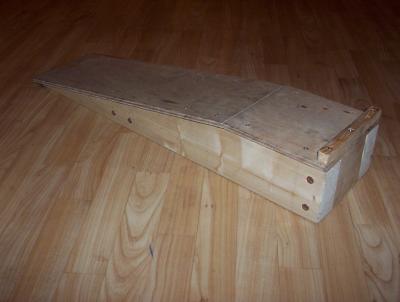
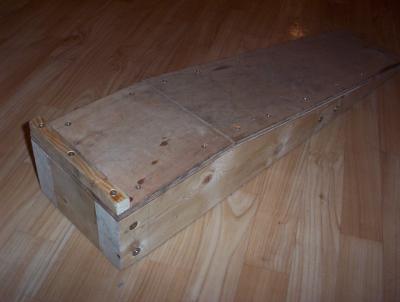
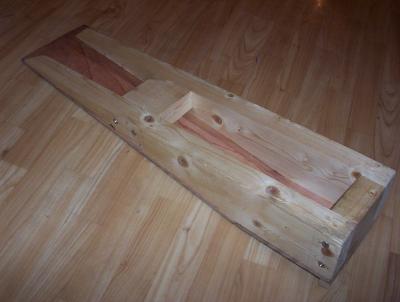
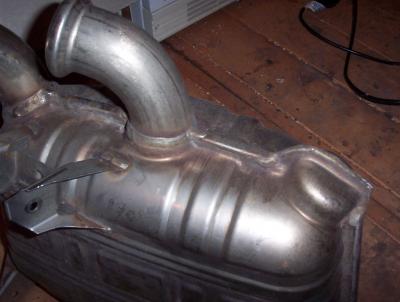
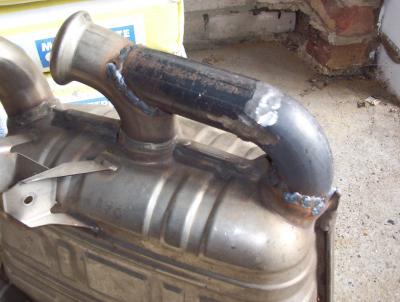
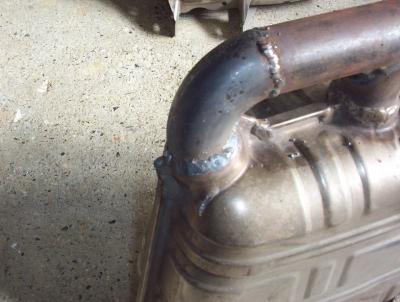
Lost Radio Code - post your request here
in Lost Radio Codes
Posted
Works :) Thanks very much - as always this site is THE resource for Porsche fans :thankyou: